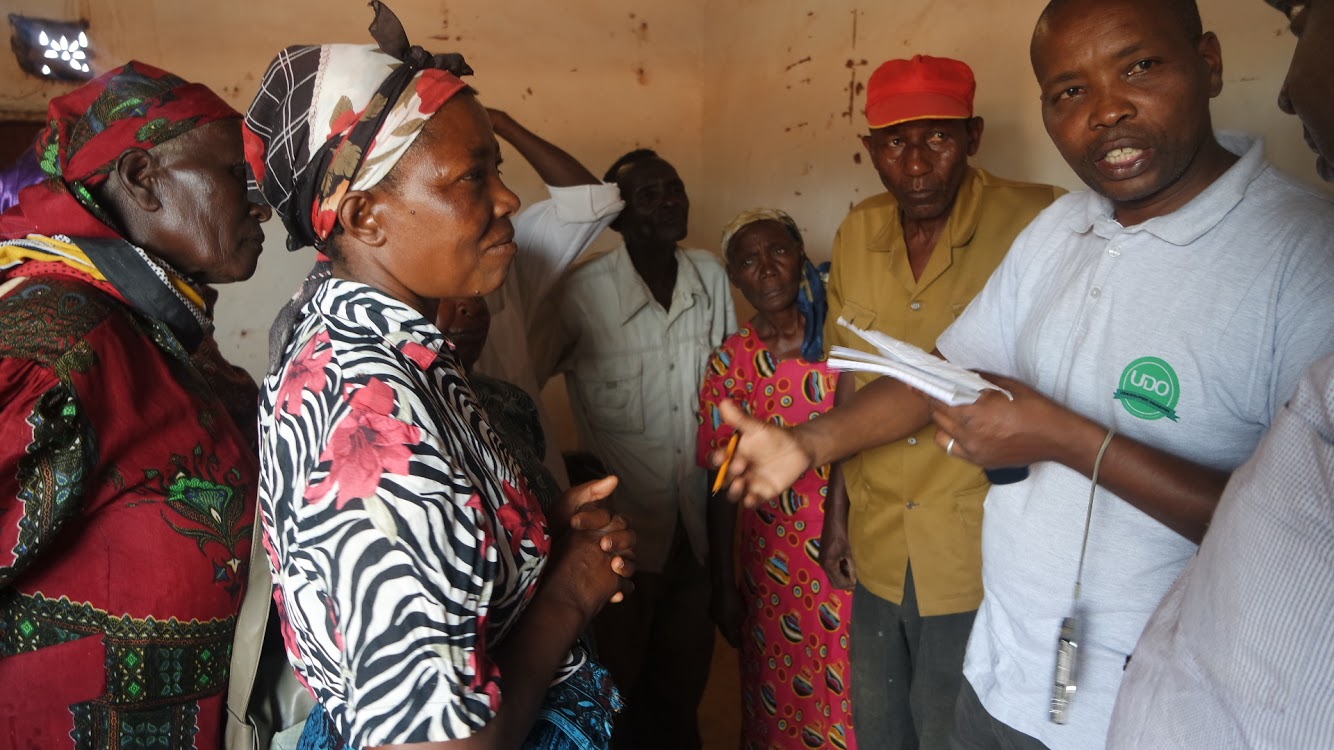In many parts of the area near Kibwezi, Kenya, I see corn that has dried up. Driving around, it’s hard to find any corn that people will be able to harvest this season.
In February 2018, MCC’s partner Utooni Development Organization (UDO), which I volunteer with, started a food relief project in one of the drought-affected areas in the eastern part of Kenya near the town of Kibwezi. The distribution is being done in two villages, Kathyaka and Ngulu and is funded by MCC’s account at Canadian Foodgrains Bank.
I participated in the food distribution as a photographer. And it made me think about how easy it is to access fresh water in my home country of South Korea, where there is a reliable water system.
But it’s not common in rural Kenya. In the village where I live with my host family, people have to harvest water and it is not easy to find clean water. In Kibwezi, people farm, but the dry climate means the land is unproductive. They work hard for a better life, but through no fault of their own they are suffering.
UDO has already done three distributions of food in these villages because the drought has persisted. People here use the conservation agriculture techniques taught by UDO, but the drought has made it impossible to harvest crops this year.
UDO also works to improve food security and enhance sustainable livelihood opportunities for small-scale farmers in Machakos, Mukueni and Kajiado counties through conservation agriculture.
When we arrived at the distribution locations, many people were already gathered to wait for us.
After a brief introduction, we started distributing the food assistance.
Each group had a supervisor appointed by people from the village, and another helped them to confirm everyone had enough and was able to carry it home. Because the sun was very hot, people worked slowly to help each other to make food distributions. Each person received 30 kilograms of maize, four kilograms of beans and one and a half litres of oil.
The people of the village helped each other carry their rations home.
Most people looked happy to receive the food and many thanked us for the assistance.
When I return to South Korea, I want to discuss the poverty I saw in Kenya with my friends and talk about what we should do about this.
—Minyoung “Blee” Jung is a Young Anabaptist Mennonite Exchange Network (YAMEN) participant from South Korea serving in Kenya. She’s working as a public relations coordinator for MCC’s partner, Utooni Development Organization (UDO) from 2017–2018. YAMEN is a joint Mennonite Central Committee (MCC) and Mennonite World Conference (MWC) program.
—A Mennonite World Conference and Mennonite Central Committee joint release.
